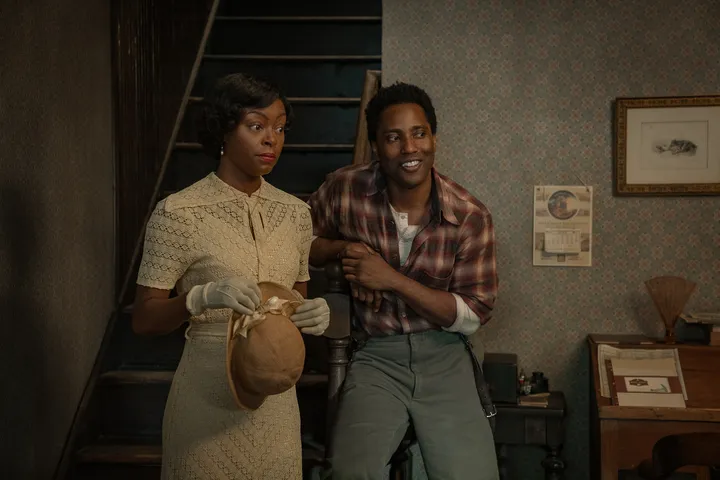Netflix’s ‘The Piano Lesson’ Is A Haunting Adaptation — And Not In A Good Way
Share
Explore Our Galleries
Breaking News!
Today's news and culture by Black and other reporters in the Black and mainstream media.
Ways to Support ABHM?
By Erin E. Evans and Candice Frederick, HuffPost
Despite stellar performances, the August Wilson stage play doesn’t really translate to the screen.

David Lee/Netflix
The latest adaptation of August Wilson’s “The Piano Lesson” premiered Friday on Netflix.
“The Piano Lesson” is set in 1939 and centers Boy Willie (John David Washington), who travels from Mississippi to Pittsburgh with his friend Lymon (Ray Fisher) to sell watermelons and convince his sister Berniece (Danielle Deadwyler) to sell their family heirloom, a storied piano. Samuel L. Jackson portrays their uncle Doaker in the film. Michael Potts, Corey Hawkins and Skylar Aleece Smith also star.
Through flashbacks, the film follows the story of the Charles family, who were enslaved and then traded for the piano by their enslaver Sutter (Jay Peterson). The patriarch of the Charles family, Boy Charles (Stephan James), carved his family into the instrument; years later, Boy Charles steals the piano from Sutter’s family and is murdered by them. Berniece swears the piano is haunted by Sutter’s ghost but also values its meaning to their family. Boy Willie wants to get rid of the piano and build a more stable future for him and his family.
Much of the cast has close ties to Wilson’s play, which first premiered in 1987 at Yale Repertory Theater and starred Jackson as Boy Willie. Washington, Fisher, Jackson and Potts all starred in the Broadway revival of the production in 2022. Denzel Washington serves as executive producer of the Netflix adaptation, his third Wilson on-screen production after “Fences” and “Ma Rainey’s Black Bottom.”
[…]
A Slant review of the film really hits the nail on the head: “With a full arsenal of special effects, they give into the temptation to go full William Castle, literalizing the metaphorical ghosts of a play that’s so rich in theme, character, and dialogue with standard haunted-house imagery.”
There’s a delicate way that screenwriters Virgil Williams and Malcolm Washington could have approached this adaptation, so as not to lean so much on scaring audiences or infusing the scenes with the type of dread that is rooted in the horror genre. It really takes away from the intent in Wilson’s work.
Finish reading the article here.
Support more Black narratives in film and theater, check out “Marie and Rosetta: The unsung story of Rock ’n’ Roll’s roof-raising soul sisters” at Milwaukee Repertory Theater through December 16th.









Comments Are Welcome
Note: We moderate submissions in order to create a space for meaningful dialogue, a space where museum visitors – adults and youth –– can exchange informed, thoughtful, and relevant comments that add value to our exhibits.
Racial slurs, personal attacks, obscenity, profanity, and SHOUTING do not meet the above standard. Such comments are posted in the exhibit Hateful Speech. Commercial promotions, impersonations, and incoherent comments likewise fail to meet our goals, so will not be posted. Submissions longer than 120 words will be shortened.
See our full Comments Policy here.